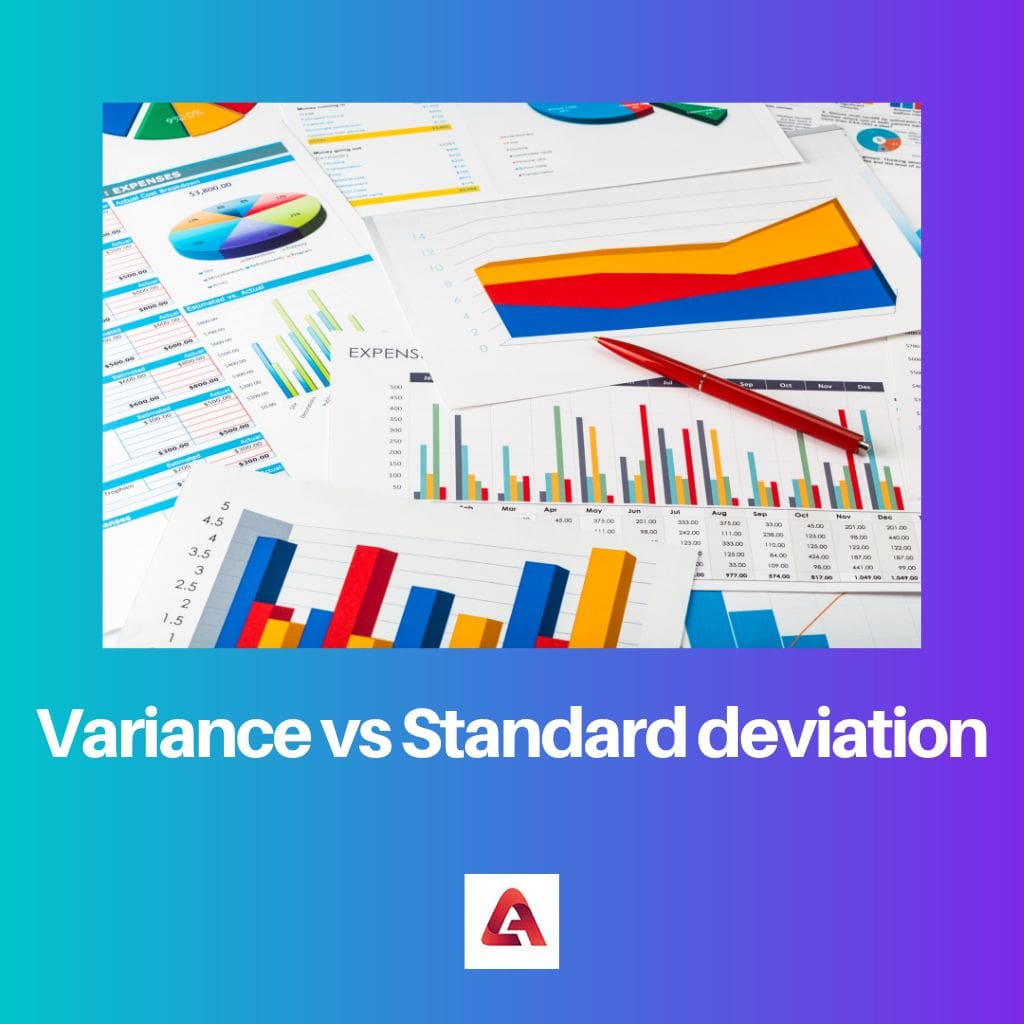Standard deviation and Variance are fundamental numerical ideas that assume significant parts throughout the monetary area, including bookkeeping, financial matters, and contributing.
At a point when we measure the changes related to a lot of information.
To be more specific, the variance and standard deviation, which both demonstrate how spread out the knowledge esteems are, will also include how comparable the strides are in their computation.
Key Takeaways
- Variance is a statistical measure that quantifies the dispersion of data points in a dataset around the mean value.
- Standard deviation is the square root of the variance and provides a more interpretable measure of dispersion.
- Both variance and standard deviation help assess data variability, with higher values indicating greater dispersion and lower values suggesting more consistent data.
Variance vs. Standard Deviation
Variance measures how much individual data points vary from the mean, with a high variance indicating more spread out and a low variance indicating more clustered. Standard deviation is the square root of the variance and is used to measure the variability or uncertainty of a set of data.

Comparison Table
| Parameters of the Comparison | Variance | Standard Deviation |
|---|---|---|
| Definition | It can be used to grant many virtues in investing in portfolios. | Regarding the financial section, the standard deviation is utilized for security and in its market. |
| How is it calculated? | Each value of the information set is taken and squared, and the average of these values is considered. | The calculation is done by taking the square root of the variance value. |
| Symbol | Sigma (σ) is the symbol here. | Sigma squared (σ2) is the symbol for the standard deviation. |
| How are they both well-differentiated? | Here, the variance is most needed only in mathematical calculations. | When any data needs to be calculated variably, the standard deviation is mostly utilized. |
| General formula | σ2 = ∑ (x – M)2/ n, where n is the number of the data values, x is the specific value, and m is the mean. | σ = √∑ (x – M)2/ n, where x is the specific value of the data, n is the total number of values. This is easy to remember as it is just the square of the variance. |
What is Variance?
Variance is the proportion of inconstancy that speaks to how far individuals from a gathering are spread out. I
At any point, when the change of an informational index is little, it shows the closeness of the information focuses on the mean.
The appropriate response is you can utilize the difference to sort out the standard deviation — a greatly improved proportion of how to spread out your loads. To get the standard deviation, take the square foundation of the example change: √9801 = 99.
The standard deviation, combined with the mean, will mention what most individuals gauge.
What is Standard Deviation?
When the main focus is very further from the mean, there is a higher deviation inside the date; if they are nearer to the mean, there is a lower deviation. So the more spread out the gathering of numbers is, the higher the standard deviation.
To ascertain standard deviation, include all the information focuses and separate them by the quantity of information focuses.
The informational collection with the littler standard deviation has a smaller spread of estimations around the mean and, like this, has similarly less high or low qualities.
A thing chosen aimlessly from an informational index whose standard deviation is low has a superior possibility of being near the mean than a thing from an informational index whose standard deviation is higher.
For the most part, the more spread the qualities are, the bigger the standard deviation is. For instance, envision that we must isolate two distinct arrangements of test results from a class of 30 understudies. The primary test has marks from 31% to 98% and 82% to 93%.
Main Differences Between Variance and Standard Deviation
- Variance is a mathematical worth that depicts the changeability of perceptions from its number juggling mean. Standard deviation is a proportion of the scattering of perceptions inside an informational collection compared with their mean.
- Variance is indicated by sigma-squared (σ2), and the standard deviation is marked by the symbol sigma (σ).





